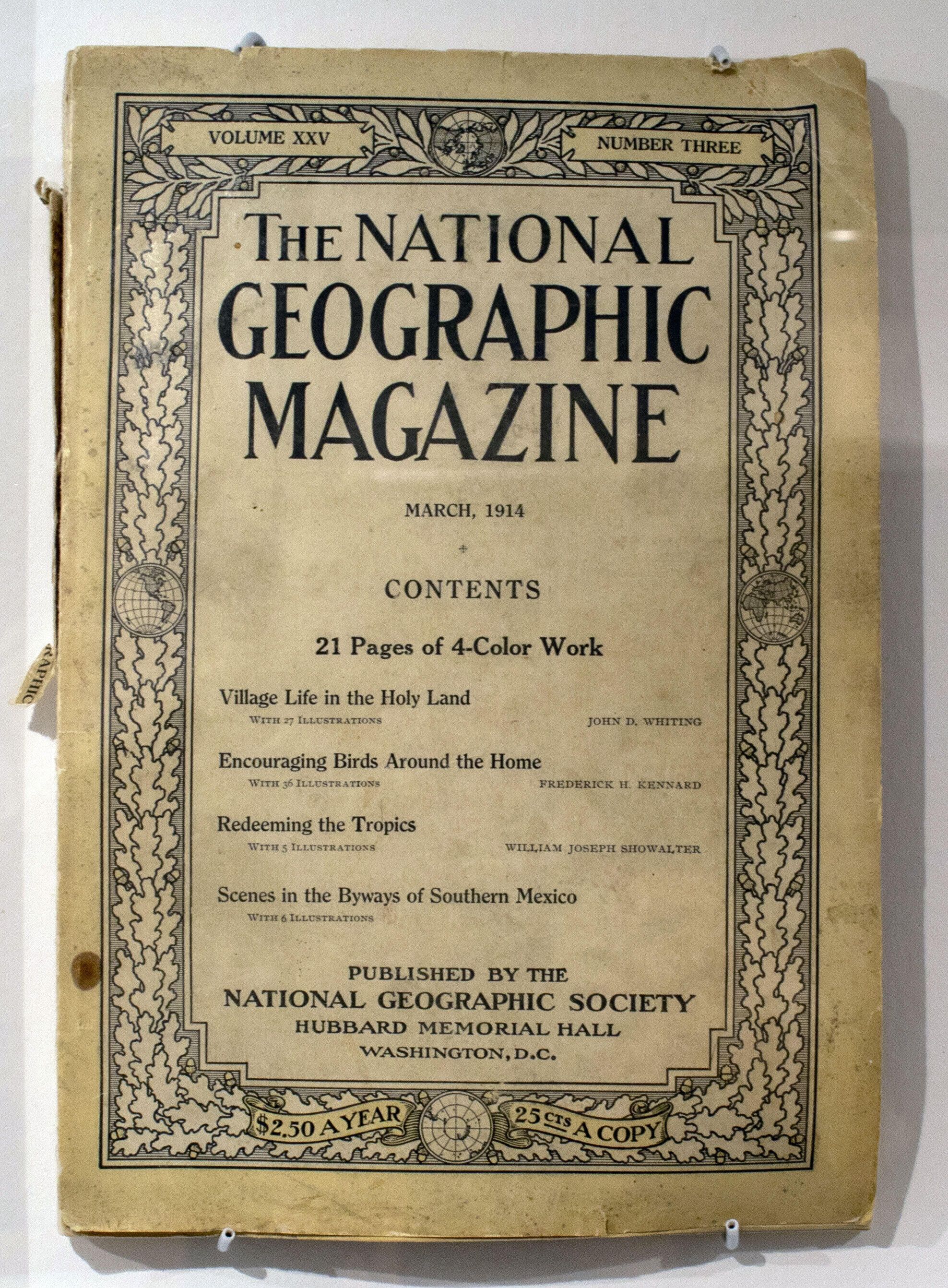Name/Title
National Geographic Magazine, Vol. 25, No. 3 (March 1914)Entry/Object ID
2021.011Tags
On ViewDescription
Palestinians recognize the land as their most valuable inheritance, and consider farming a very important part of the daily life. In this 1914 issue, National Geographic Magazine explored the land and agriculture of Palestine through their article "Village Life in the Holy Land", authored by John D. Whiting.
"A description of the life of the present-day inhabitants of Palestine, showing how, in many cases, their customs are the same as in Bible times. Illustrated by the American Colony Photographers, Jerusalem... Palestine, often called the Holy Land, is in a general way familiar to all of us from our study of the Bible. Few, however, realize that the manners and customs which prevailed there in Biblical days are still unchanged, even after an interval of 3,000 years."
National Geographic Magazine frequently showcased Palestine and the Palestinians within a Biblical lens, a process coined by Issam Nasser as "Biblification". Nasser notes that the process of Biblification is, "the reading of Palestine through Biblical narrative, effectively projecting the land and its people backwards into an ancient past, while also excising the modern from the photographic frame." Biblification created a contradiction, given that photography is a modern medium that was embraced in Palestine as a cosmopolitan, thriving and prosperous place during the late 19th century and early 20th century. However, the photographic lens -- when carried by Europeans and Americans -- reflected that Palestine was of the ancient past, calling into question the "civility" of the Palestinian people. This problematic colonialist narrative made way to the dehumanization of the Palestinian people through the presentation of these photographs to the world and is reflected in the emphasis on Biblically significant villages and towns photographed, captioned and discussed in magazines and news produced at that time, including National Geographic Magazine. Still, Palestinians today view these photographs and articles as documentation of life as it existed before 1948, and evidence of their indigeneity to the land.
Cover Details:
The National Geographic Magazine
Volume 25, Issue No. 3 (March 1914)
Published by The National Geographic Society, Hubbard Memorial Hall
Washington, DC
Wall label:
In this 1914 issue, National Geographic Magazine explored the land and agriculture of Palestine through their article “Village Life in the Holy Land”, authored by John D. Whiting. Describing early 20th century Palestinian customs as “the same as in Bible times,” the magazine frequently showcased Palestine and the Palestinians within a Biblical lens, presenting Palestine as a land inhabited by people whose lifestyles were “still unchanged, even after an interval of 3,000 years.” This process was coined by Issam Nasser as “Biblification,” noting that “the reading of Palestine through Biblical narrative, effectively project[s] the land and its people backwards into an ancient past, while also excising the modern from the photographic frame.” Biblification contradicted contemporary photography, a modern medium that was embraced by Palestinians, which presented a cosmopolitan, thriving and prosperous Palestine during the late nineteenth and early twentieth centuries. However, the photographic lens – when wielded by Europeans and Americans – reflected that Palestine was of the ancient past, calling into question the "civility" of the Palestinian people. News and other media produced at the time, including National Geographic Magazine, encouraged this perspective by emphasizing Biblically significant villages and towns as the focus of their photographs, captions and discussions. Still, Palestinians today view these photographs and articles as documentation of life as it existed before 1948, and evidence of their indigeneity to the land.Collection
Permanent CollectionDimensions
Height
10-1/4 inWidth
7-1/4 inDimension Notes
10.25 " x 7.25"General Notes
Note
Museum of the Palestinian People Collection
